Google Nexus 5 vs Samsung Galaxy S4
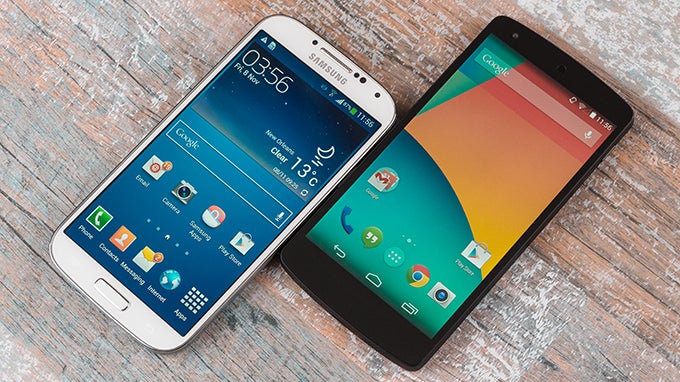
Introduction
Android seems to be no longer synonymous with Samsung handsets, and the tough choices we face when choosing a phone this holiday season got complicated even further by Google's own Nexus 5 handset – arguably the best value you can snatch in Roboland.
Google's phone puts the makings of a flagship, such as a 5” 1080p display, quad-core Snapdragon 800 processor and optically stabilized camera, in a $350 chassis, and tops it off with some exclusive features from the latest Android 4.4 KitKat. The Galaxy S4 counters with unorthodox 1080p OLED display, expandable memory and user-replaceable battery.
Are the relatively unknown for the typical user Nexus 5 and its unique KitKat features able to win holiday shoppers against the most popular Android flagship - Galaxy S4 – and its instant Samsung brand recognition? Read on to find out...
Design
Glossy or soft-touch plastic? Rounded or roughneck corners? These will be the main choices you will be facing when choosing between the Galaxy S4 or Nexus 5 chassis, respectively, as the phones weigh exactly the same 4.59 oz (130 g), and have very similar dimensions in length and width. The Galaxy S4 is a tad slimmer, though, at 0.31” (7.9 mm) against the 0.34” (8.59 mm) Nexus 5, but it's not the thickness that makes Google's phone appear cruder, rather the whole angular industrial design of it. Still, both handsets sit very well in the hand, and the svelter looks of the Galaxy S4 don't translate into better ergonomics compared to the Nexus 5 as far as handling is concerned.
This soft-touch, almost rubbery chassis of the LG-made Nexus feels a bit more premium to the touch than the glossy polycarbonate of the S4, though the subjective impression here boils down to your personal preferences. Moreover, the soft-touch coating of the black Nexus 5 quickly gets spattered with rather visible fingerprints and smudges.
Samsung's flagship line has offered removable back covers, expandable storage and user-replaceable batteries from day one, and the S4 doesn't stray from that tradition, whereas the unibody Nexus 5 is rather limited in that respect – its battery is not user replaceable and it lacks microSD memory card slot.
The mobiles utilize micro SIM card slots, with the Nexus 5 providing a right side tray for it, and a very tiny pin instrument in the box. Make sure you don't lose it, as the opening for pushing the tray with the SIM card out is miniscule, and even if you use a small needle, you are bound to enlarge it in an ugly way, let alone with a paper clip or a wire.
The side keys on both handsets are very easy to feel and press without looking, with good tactile feedback to them. Samsung offers its signature physical home key, too, whereas the Nexus 5 relies on navigational buttons that are on-screen, and can be hidden away when the whole display is needed with the new Immersive mode. Since both phones have identical screen diagonals and close dimensions, the presence of on-screen buttons on the Nexus 5 doesn't seem to offer any particular advantage, so that department is again a matter of personal preferences.
Displays
Both screens are 5” 1080x1920 pixels Full HD panels, so they should be pretty similar, right? Well, not really, as the display technologies used are rather different. Samsung differentiates its flagship handsets with the homebrew Super AMOLED tech that brings about very deep black levels, yet somewhat cold and oversaturated colors. You can choose different screen modes in the display settings, but these basic premises are still visible, and there are sometimes weird glitches like scrolling blur and purple hued status bar, facing the early adopters of the world's first Super AMOLED Full HD mobile display.
The Nexus 5 uses an IPS-LCD screen made by LG, which sports more washed-out blacks compared to the Galaxy S4, but truer color representation. Still, its colors are slightly yellowish and under saturated (dull) compared to reference screen. Its viewing angles seem a tad worse than those of the OLED display, especially when observing the phone at an angle from its corners.
Outdoors both devices have pretty similar visibility, despite that the Nexus 5's LCD screen is brighter than Samsung's panel. Google's phone seems to sport higher reflection ratio, especially true with the annoying mirror reflections when you have direct light shining on the screen - like the sun, for instance. The Galaxy S4 has pretty good anti-reflective coating, and its much higher contrast levels contribute to visibility on par with the Nexus 5 outdoors, despite the lower peak brightness.
Google Nexus 5 360-Degrees View
Samsung Galaxy S4 360-Degrees View
Interface and functionality
Blessed with the newest Android 4.4 KitKat out of the box, the Nexus 5 will have bragging rights before the Android 4.3-laden Galaxy S4 for a few months, but after that it's fair game. Samsung puts its TouchWiz Nature UX interface overlay on top of the Android looks, though, so if you want stock experience, the Nexus 5 should still be your bet.
Samsung's interface sports some additional functions you might find useful such as eye-tracking via the front camera which keeps the screen on as long as you are looking at it, as well as video playback pause when you glance away. In addition, it offers things like Air View, which lets you preview emails, messages or even Flipboard news tiles by hovering your finger over them, and Group Play, which can daisy chain a few Galaxy S4 speakers for improvised surround sound listening, or collaborative gameplay.
Thanks to the built-in thermometer and hygrometer, Samsung's phone can also record the ambient temperature and humidity, utilized best in the exclusive S Health fitness and wellbeing app that warns when the environment is getting unbearable around you – like, when your in-laws arrive for Christmas. In addition, it can count your steps and movements throughout the day and do some tricks with calorie and fitness regimen advice based on your lifestyle.
The Nexus 5 strikes back with a step counter, too, but this one has a pedometer sensor directly built into the phone, not relying solely on the run-of-the-mill gyro and accelerometer that every smartphone has. Android KitKat also introduces new interface features like calling the Google Now butler with a left swipe, or the new Immersive mode, which if supported by the app, allows to hide the on-screen buttons and status bar, which can then be called back with a simple gesture.
Furthermore, there are some functions that are unique for KitKat on the Nexus 5, such as wall-to-wall papers, the ability to start voice search directly from the home screen by saying “OK, Google”, and low-power audio playback that lasts for up to 60 hours on the phone, thanks to the embedded audio tunneling in the chipset. The S4 music playback can last about the same, though, so not really an advantage.
Overall, if you prefer stock Android rather than manufacturer customizations, no matter how good they are, the Nexus 5 is currently your best bet. When the Galaxy S4 receives its KitKat update, things would be on a more even keel, yet some features that are unique to the Nexus 5 hardware won't be making it to Samsung's handset.
Processor and memory
Graced with a quad-core Snapdragon 800, clocked at 2.3 GHz, and stock Android build, the Google Nexus 5 should run faster than the Galaxy S4 with its quad-core Snapdragon 600. This is, however, not the case neither during handling, nor if you are a benchmark geek, as the Quadrant results, for instance, are higher from the S4. In reality, the interface and app performance of Samsung's handset is perfectly fine, without any noticeable lag or stutter compared to the Nexus.
Both phones offer 2 GB of RAM, so feel free to multitask at your heart's desire, but when it comes to expandable memory, the S4 has the upper hand. Granted, the phone comes in the same 16 GB or 32 GB versions as the Nexus 5, but offers a microSD card slot under that removable back cover for further storage expansion.
Internet and connectivity
No bad word can be said about browsing on these speedy handsets. Nexus 5 uses Chrome as the default browser, so you can kiss any Adobe Flash need that arises goodbye with the stock app, while Samsung's browser lets you sideload it. Chrome is getting faster and better with each new edition, but the speed king is still Samsung's default browser. Its interface seems a bit clunky, though, compared to the minimalistic one of Chrome, and its easy tab switching.
The phones are loaded with connectivity options, such as LTE/HSPA+ radios, depending on the region and carrier, Wi-Fi/ac, Bluetooth 4.0, A-GPS, DLNA and NFC. Android 4.4 KitKat introduces native support for IR blasters, but the Nexus 5 doesn't have one, while the Galaxy S4 can be used as an IR remote with its dedicated app that lets you control TVs, home stereos, air conditioners and the like from your phone.
As for wired connectivity, the microUSB port on both phones has HDMI out, however on the Galaxy S4 you must use MHL adapter/cable, while on the Nexus 5 you must use SlimPort one.
Camera
The Nexus 5 sports an 8 MP camera with f/2.4 aperture and 1/3.4” sensor, while the Galaxy S4 counters with a 13 MP unit with the same aperture and a larger, 1/3.06” sensor. Google's phone, however, sports optical image stabilization tech, which hangs the sensor on a tiny suspension mechanism, designed to compensate for your hands movements, thus diminishing shaky videos or blur.
Samsung offers an abundance of shooting and scene modes, as well as color effects in its interface, ranging from Panorama through HDR to Macro modes, which can be set through a quick transparent interface. The Android KitKat camera UI is more devoid of shooting options, and hasn't changed much from the previous version. Nexus 5, however, got a nice exclusive HDR+ mode, which not only combines burst shots taken with different exposure, but applies some proprietary sharpening algorithms, too, for a very good overall effect. Good to the point that you'd want to have HDR+ always on, as otherwise photos with the handset can show overexposed bright areas.
The Galaxy S4 sports a rather natural color representation, whereas the Nexus 5 tends to lean on the warm side, leaving a slightly yellowish cast impression. Detail is a tad less in the Nexus 5 photos compared to what the Galaxy S4 is able to capture, with about the difference we'd expect to see between an 8 MP and 13 MP camera.
In darker scenarios, however, the Nexus 5 has the upper hand with better-lit, blur-free frames. The stabilization allows it to soak in more light as its exposure times stay longer than those on the Galaxy S4, without causing blur. The end result is better-lit images with less noise. The LED flashes on the handsets do a decent job illuminating the scene evenly from about 5 feet distance, without casting awkward shadows, or causing strange reflections.
The panoramas that the two phones capture are hugely different. The ones from the S4 are excellent, with huge resolution and top-notch detail and colors. The ones from the Nexus 5 are exactly the opposite – with disappointingly low resolution, detail and lacking colors.
The front-facing camera on the Nexus 5 is 1.3 MP, while the Galaxy S4 has a slightly higher, 2 MP resolution. Nexus 5's front cam exposes your selfies better against strong light, like a window, for instance, but detail is scarce, and things get hairy when the light dims down, giving the Galaxy S4 an advantage for indoor selfies or video chat sessions.
Video capture is pretty stellar on both handsets, with 1080p resolution, fluid 30 frames per second, and clean audio recording. The footage just looks better from the Nexus 5, though, and not only because it is much steadier thanks to the image stabilization tech in the camera, but also since its refocusing and exposure compensation are thus faster while panning around. Contrast is also set a higher on the Nexus 5 capture by default, which adds to the visual appeal of its video footage.
Multimedia
The galleries on both devices are pretty standard, with gird-like thumbnail previews of your photos, folder categorization, and editing options. Samsung lets you split the screen in two, with the folder structure on the left, and their contents on the right, which speeds up gallery navigation. Android KitKat introduces some richer editing options to the stock interface, but Samsung's overlay has had a similar abundance of editing features and color effects from day one.
Nexus 5 uses the Play Music cloud service front for your tunes, which doesn't differ from what you are used to see on any Android with the Google apps suite on it. You've got song categorization, a few built-in equalizer presets and that's about it. Samsung's music player is no eye-candy, but it does the job fine, categorizing your tunes in albums, artists, playlists and genres, while also introducing an abundance of equalizer modes you can choose from.
The Nexus 5 loudspeaker is on the iffy side, with flat and not particularly strong sound. Not that the Galaxy S4's speaker is much better in the octaves range, but it's at least stronger – 71 dB vs 66 dB for the Nexus in our tests. Moreover, the S4 comes with an excellent set of earbuds that are a step above the usual mediocrity that manufacturers pack with their handsets, while the Nexus 5 has no earbuds in the box.
The Nexus 5 sports exclusive audio tunneling hardware which the low-power audio playback function in Android KitKat takes full advantage of for 60 hours of music playback on a charge. The Galaxy S4, however, is rated for about the same endurance, not to mention the Xperia Z1, which returns a record 110 hours number, so nothing really extraordinary here.
Video playback is superior on the Galaxy S4, not only thanks to the deep blacks and saturated colors of the AMOLED display that make the footage really pop, but also because its player supports most major codecs out of the box, including MKV, DivX and Xvid, and the phone lasts longer during video playback than the Nexus.
Google's phone, on the other hand, doesn't have DivX licenses, so if you want to play videos in that format, you'd have to hit the Play Store. It does add closed captioning and subtitle support, though, thanks to Android KitKat, and you can set systemwide captions in a language and font of your choice with preview.
Call quality
The Nexus 5 also has two mics for noise cancellation, which do an admirable job for discerning our voice on the receiving end without the ambient fluff. The usual earpiece slit is replaced with an earpiece circle on the Nexus 5, and it takes some time to adjust it right onto your ear, so as to take advantage of the full speaker strength, which leaves something to be desired in the first place.
The Galaxy S4 sports very good call quality, relaying our voice loud and clear to the other end through the dual noise-canceling mic setup. Voices in its earpiece could sound stronger and fuller, though.
Overall, call quality on both handsets is average from their earpieces, while their microphones perform above average for the receiving end.
Battery
The 2300 mAh battery of Google's phone and the 2600 mAh unit on the S4 provide very similar endurance scores in our standardized testing – 4h 50m vs 4h 59m, respectively – and the phones are even rated for the same 17 hours of talk time in 3G mode by their manufacturers.
Since we have similar music playback and browsing sessions endurance scores, about the only thing different is video playback, where the OLED display shines with more than ten hours on a charge possible from the Galaxy S4.
Conclusion
The Samsung Galaxy S4 is an excellent phone. Compared to the Nexus, it also offers a microSD slot, longer video playback, a tad more detailed photos, and IR blaster for universal remote control. However, you can add two Benjamins to the $350 price of the Nexus 5 if you want it off-contract.
Apart from those the Nexus 5 offers very similar experience to the Galaxy S4 in all areas, and outshines it in several, such as low-light photos and steadier videos. Also, it will be a while before the Galaxy S4 gets the latest Android 4.4 KitKat features officially.
If you are buying the Nexus 5 from the Play Store, that is, since carrier pricing differences with subsidies aren't as stark as the full retail price gap between the two handsets, amounting to about 50 USD or Euros. On Sprint, for instance, the Nexus 5 can be had for $150 if you aren't transferring your number from another carrier, while the S4 costs $200. Full retail price is listed by Sprint as $450 for the Nexus, and $600 for the S4. Moving over to Europe, France's Bouyuges Telecom, for instance, sells the Nexus 5 for EUR 130, while the S4 will run you EUR 180 on the same contract.
One thing is for certain – if you want stock Android and the fastest updates to the latest iteration of Google's mobile OS, the Nexus 5 won't make you break the piggy bank for this to happen, provided that you can grab it off the Play Store, and you'll still flaunt flagship specs to boot.

Follow us on Google News
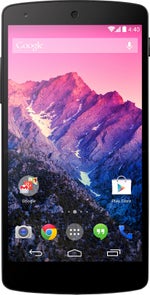
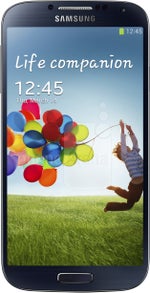


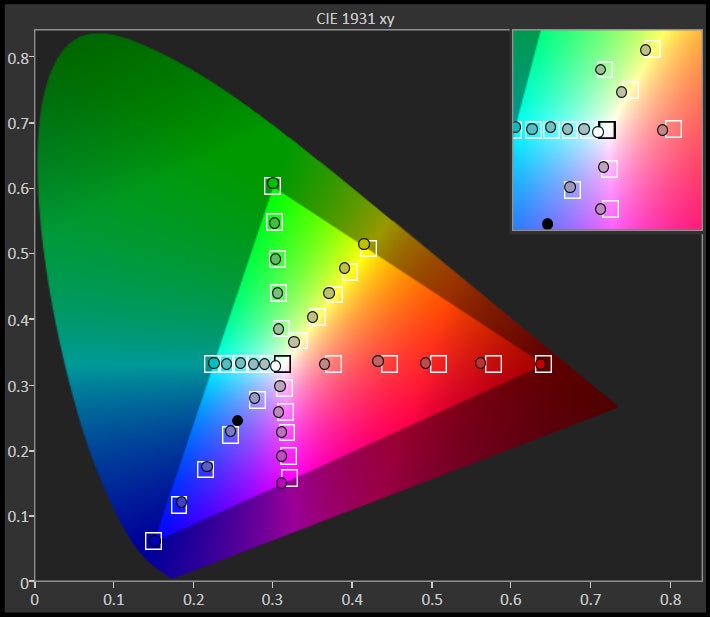






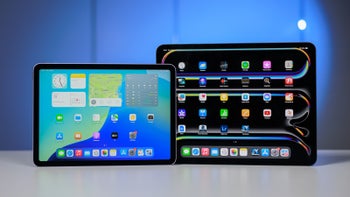
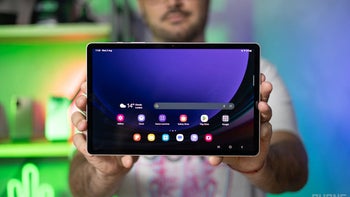
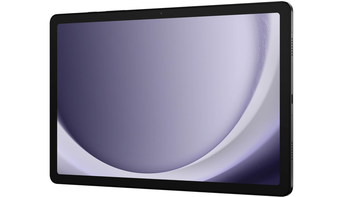
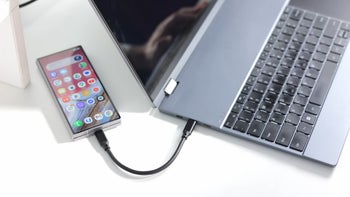

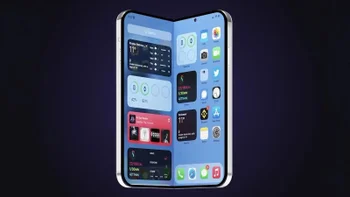
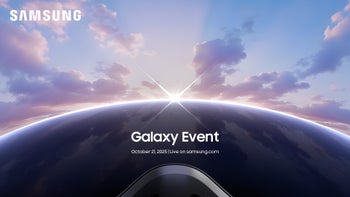
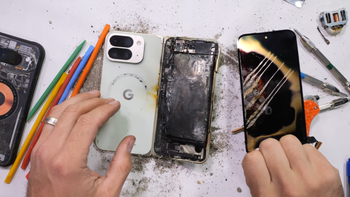



Things that are NOT allowed:
To help keep our community safe and free from spam, we apply temporary limits to newly created accounts: